Table of Contents
ToggleIn a world where technology and sustainability are often seen as frenemies, the “Sustainable IT Playbook for Technology Leaders” is here to change the game. Imagine a playbook that not only helps tech leaders navigate the complex landscape of eco-friendly practices but also does it with a wink and a nod. It’s like having a green thumb while coding—who knew saving the planet could be this fun?
Overview of Sustainable IT Playbook
The “Sustainable IT Playbook for Technology Leaders” serves as an essential guide, combining technology and sustainable practices. This playbook equips tech leaders with strategies for implementing eco-friendly initiatives within their organizations.
Purpose and Goals
The primary goal focuses on guiding technology leaders towards sustainable practices in IT. Leaders gain insight into integrating eco-friendly measures seamlessly into their workflows. This playbook emphasizes practical actions, making sustainability achievable in daily operations. It promotes resource efficiency, reduced carbon footprints, and ethical technology usage. Technology leaders can expect to enhance their organization’s sustainability while fostering innovation and collaboration.
Target Audience
The target audience consists of technology leaders, including CIOs and CTOs, who play crucial roles in shaping their companies’ technological landscapes. This resource caters to decision-makers who prioritize environmental impacts alongside technological advancements. Additionally, sustainability officers and IT managers can benefit from the playbook’s actionable insights. These professionals seek to align their operational strategies with sustainable practices while maintaining competitive advantages. Ultimately, the playbook engages leaders across various industries who are committed to making a positive environmental impact.
Key Concepts in Sustainable IT

Sustainable IT focuses on minimizing environmental and social impacts while enhancing operational efficiency. Several key concepts guide technology leaders in adopting these principles.
Environmental Impact of IT
Energy consumption contributes significantly to carbon emissions in the tech industry. Data centers and server farms account for 1 to 2 percent of global electricity usage, which highlights the necessity for energy-efficient technologies. Utilizing renewable energy sources can drastically cut these emissions, driving the industry toward a greener future. Implementing virtualization techniques also optimizes server utilization, reducing overall hardware needs. Emphasizing circular economy principles helps organizations recycle and repurpose materials, which minimizes waste and extends product lifespans. Leaders who prioritize these practices can create a measurable impact on the environment.
Social Responsibility in Technology
Social responsibility encompasses ethical considerations in technology development and deployment. Inclusivity in tech jobs benefits society, as diverse teams lead to innovative solutions. Adopting fair labor practices during the supply chain process strengthens relationships with stakeholders and communities. Leaders play a crucial role in advocating for data privacy and security, protecting users from abuses. Investing in education and training programs empowers underrepresented groups, fostering talent growth in tech. Aligning technology initiatives with social values enhances an organization’s reputation while contributing positively to society.
Strategies for Implementation
Implementing sustainable practices requires a focused approach. Technology leaders can benefit from structured frameworks and effective tools.
Framework for Sustainable Practices
Develop a comprehensive framework to guide sustainable IT initiatives. Leaders should establish clear goals and metrics for measuring progress. Aligning sustainability objectives with business strategy enhances organizational commitment. Incorporating stakeholder feedback fosters collaboration and drives innovation. Engaging teams through training initiatives builds a culture of sustainability within IT operations. Regularly reviewing performance against set benchmarks ensures continuous improvement in sustainable practices.
Tools and Resources for Leaders
Utilizing specific tools can significantly simplify the implementation of sustainable initiatives. Cloud-based platforms offer efficiency by minimizing energy consumption in data centers. Analytics tools help monitor energy use, allowing organizations to identify areas for improvement. Collaboration software enables teams to share best practices effectively. Open-source resources provide access to sustainability frameworks and guidelines, fostering transparency. Networking within industry groups also connects leaders with peers who share sustainability goals, enhancing knowledge sharing.
Case Studies and Examples
Case studies illustrate the practical application of sustainable IT strategies in real-world settings. They highlight successful implementations and lessons learned from challenges encountered.
Successful Implementation in Organizations
Leaders at Company A adopted cloud technology, significantly reducing energy consumption in their data centers. As a result, they achieved a 30 percent reduction in operational costs. Company B focused on energy-efficient hardware, leading to a 25 percent decrease in their overall carbon footprint. Strategies included utilizing virtualization to maximize resource efficiency. Engaging employees through training programs fostered a culture of sustainability, further enhancing results. The combination of innovative technologies and committed leadership drove these organizations toward their sustainability goals.
Lessons Learned from Challenges
When implementing sustainable IT practices, organizations encountered various obstacles. Company C faced supply chain disruptions due to the transition to ethical sourcing. Lessons learned included the need for flexibility in vendor partnerships to maintain sustainability efforts. Company D struggled with employee resistance to new technologies, highlighting the importance of clear communication and involvement in the process. Feedback mechanisms proved essential in addressing concerns and ensuring buy-in. Failure to manage expectations can lead to setbacks, emphasizing the value of setting achievable milestones within sustainability frameworks.
Future Trends in Sustainable IT
Sustainable IT is poised for significant transformation. Technology leaders must stay informed about the latest trends that can drive eco-friendly practices and operational efficiency.
Emerging Technologies
Innovative technologies shape the future of sustainable IT. For instance, green cloud computing allows organizations to reduce their carbon footprints while enhancing performance. Edge computing also facilitates data processing closer to the source, minimizing energy consumption. In addition, advancements in renewable energy integration support the use of clean power in data centers. Companies focusing on sustainability increasingly leverage blockchain for transparency in supply chains, promoting ethical sourcing and reducing waste. Quantum computing, although still in development, promises breakthroughs that could optimize energy usage across various applications. Overall, embracing these technologies enables organizations to align with sustainable practices effectively.
The Role of AI and Automation
Artificial intelligence plays a crucial role in advancing sustainable IT initiatives. AI-driven analytics help organizations identify inefficiencies and optimize resource allocation. Predictive maintenance powered by AI reduces equipment failures and extends the lifespan of technology assets. Automation streamlines processes, minimizing human errors and further enhancing operational efficiency. Integrating AI into energy management systems allows real-time adjustments based on usage patterns, leading to significant energy savings. Machine learning algorithms can also enhance decision-making by providing insights that support sustainability goals. Prioritizing AI and automation not only supports eco-friendly initiatives but also drives competitiveness.
The “Sustainable IT Playbook for Technology Leaders” stands as a crucial resource for those aiming to harmonize technology with sustainability. By embracing the strategies outlined in the playbook, tech leaders can drive meaningful change within their organizations while fostering a culture of sustainability.
The insights shared throughout the article highlight the potential for technology to not only enhance operational efficiency but also contribute positively to the environment and society. As leaders navigate the complexities of sustainable IT, their commitment to these practices will play a pivotal role in shaping a more responsible and innovative tech industry.
Ultimately, the journey toward sustainable IT is not just a necessity but an opportunity for growth and leadership in a rapidly evolving landscape.







